Growing tomatoes can be a great place to start gardening. While they aren’t the easiest plant to grow, they aren’t the hardest either.
The beautiful thing about growing tomatoes is there are plenty of them on the plant, so if you screw one up, or a pest easts another one, you’ll have another shot with a different tomato in a few more days.
Plus, the tomatoes from the garden taste a million times better than the bland “tomato” you can buy at the store.
This is the full guide on how to grow tomatoes, with everything from choosing a variety, to harvesting tomatoes the RIGHT way. Let’s get into it!
Choosing Which Type of Tomatoes to Grow
There are a wide variety of tomatoes you can choose to grow based on their colors, sizes, and even disease resistance. But one of the first things you’ll want to know when growing any tomato plant is the concept of indeterminate vs determinate tomatoes.

1. Indeterminate Tomatoes
Indeterminate tomatoes also called “vine tomatoes”, grow very tall and produce fruit consistently throughout the season. Often reaching 8-10 feet, they require a lot more pruning and care, but keep giving you beautiful fruits all season long.
Some of my favorite indeterminate varieties are:
- Green Zebra tomatoes – delicious green tomatoes with dark stripes
- Kelloggs Breakfast tomatoes – yellow heirloom tomatoes
- Oxheart tomatoes
2. Determinate Tomatoes
Determinate tomatoes, also called “bush tomatoes” or “patio tomatoes” only grow to around 4-5 feet tall and produce their fruits all at once. Determinate tomatoes grow in more of a bushy shape instead of getting really tall.
Some popular varieties like Roma tomatoes are determinates, which makes them great for canning and making sauces.
3. Semi-Determinate Tomatoes
Of course, there are also semi-determinate tomatoes just to make things even more complicated. Semi-determinate varieties are more bushy and compact than a regular indeterminate plant but still produce fruit all season long. You can think of them as a bushy indeterminate.
Tomato Varieties
Aside from their growing habitats (determinate vs indeterminate), there are a number of types of tomatoes you can grow as well.
- Cherry tomatoes
- Grape tomatoes
- Beefsteak tomatoes
- Heirloom tomatoes
Depending on whether you like your tomatoes sweet, or tangier is going to help you decide which type of tomato to grow.
What Color Tomatoes to Grow
Another consideration when deciding which tomato variety to grow is to think about which color tomatoes you’re looking to produce.
For example, I often choose more yellow or orange tomato varieties because they are less acidic. If you or a family member is sensitive to acidic foods, then this could be a good choice for you as well.
- Yellow Tomatoes
- Purple Tomatoes
- Red Tomatoes
- Other colors
Choosing a Soil
When growing tomatoes, you want to keep in mind the type of soil you’re growing them in.
While some plants do well in drier, sandy soil, tomatoes are not one of them. They prefer moist, well-drained soil that has a good amount of nutrients in it.
I often plant my vegetables and tomatoes in something called Mel’s Mix, which is:
- 1 part compost
- 1 part vermiculite
- 1 part peat moss
It can be expensive to set up, but I have never had tomatoes grow so well than when I plant them in this mixture. Everyone that comes over the house comments on how “full and lush” the plants are.
I put together a post on how to make Mel’s Mix to share with friends who ask, so that might be helpful for you too.
You can use a good quality potting soil to grow tomatoes, but you’re going to need to add more fertilizer because it’s not as compost rich.
Fertilizers
Tomatoes are considered heavy feeders, and they eat up a lot of nutrients. One of the reasons I love using Mel’s mix is because of all the natural nutrition that gets added via the compost.
If you’re not using a lot of compost in the soil mixture, you’re going to need fertilizer. Among other nutrients, tomatoes need calcium, potassium, phosphorus, and nitrogen to grow properly.
While tomatoes need a lot of nitrogen at the beginning of their plant life cycle, avoid high nitrogen fertilizers when they are growing flowers.
This is my favorite fertilizer for tomatoes and other garden vegetables.
Starting Your Tomato Plants
Now that you know what varieties of tomatoes you’re going to be growing, it’s time to think about getting those seeds started.
If you’re growing tomatoes from plant starts you have bought at a local garden center, you can skip to the next section on planting your tomatoes.
Tomato plants can be started indoors around 6-8 weeks before your area’s last frost date.
Starting seeds indoors is a great way to get a headstart on the growing season, and give the plants enough time to grow big and provide you with more tomatoes – isn’t that what we’re all after?!
What You Need to Start Seeds Indoors
There is a little work that goes into starting seeds before the growing season, and you need a few materials to get started.
While a lot of people think you can just start plants in the sunny windowsill, this is far from the ideal location. Most of the time, your windowsill doesn’t get enough direct sunlight each day to grow a healthy plant. It can be done, but it’s not easy for them to get adequate sunlight.
Your tomato starts will end up leggy because they are stretching to find light, and getting them to grow properly after that stress can be a challenge.
- Light Source – most windowsills won’t provide enough light, so I usually use a grow light to give the plants all the light they need and make sure they germinate properly.
- Heat Source – you’re usually starting seeds in the winter, and it can get cold inside. Tomato seeds need around 70-85 degree temperatures to germinate and most homes aren’t that warm, especially in the winter. Heat mats are a great way to heat up the soil and make sure you get good germination rates.
- Good Quality Soil – I like this one for a seed starting mix
- Seed Starting Trays – These are hands down the best option for seed starting trays.
- Water – A watering can works great
- Tomato Seeds – you can get tomato seeds from a number of places – your favorite seed company likely carries them.
You can start your tomato plants around 6 to 8 weeks before your last frost date. You can find your last frost date here.
Take that date and work backward 6 weeks on a calendar. You can start seeds 8 weeks before, but I’ve had issues where the weather stayed cold past that frost date, and my plants ended up way too big before I was able to plant them outside.
This can lead to a lot of plant stress and more issues than it’s worth in my opinion.
Here are the step-by-step directions to starting seeds indoors.
When to Plant Tomatoes Outside
Tomatoes are heat-loving plants that grow best when grown outside in the early summer. As I mentioned, you can plant your tomatoes outside after you are sure that below-freezing temperatures are no longer in the forecast.
Check the 10-day forecast for your area, especially the nighttime temperatures. If you’re seeing temps above 40-45 degrees Fahrenheit, you should be good to go.
If not, wait a few more days before transplanting your tomatoes outside.
Transplanting Tomatoes & The Hardening Off Process
If you’re growing your own plants and started your seeds indoors, the tomato transplants are used to perfect temperatures, the ideal amount of sunlight, and the perfect type of soil to grow in.
After you plant them outside, they are going to be exposed to all kinds of new things, like varying temperatures, more wind, pests, and a harsher light from the sun.
When you transplant tomatoes, they are going to experience some form of plant shock because of the change in the environment. You want to mitigate the risk of sending your plants into even more shock, so it’s ideal to complete what’s called the hardening off process.
Hardening off is when you expose the plants to these new conditions slowly by bringing them outside for a few hours each day, and returning them to their safe indoors position at night.
I know it sounds crazy, but you want to start this off slowly, around 1-2 hours for the first day, and increase their time outside as the days progress.
This can be tricky because you want to coordinate this with the above-freezing temperatures at night, but I wrote a guide on how to harden off plants here.
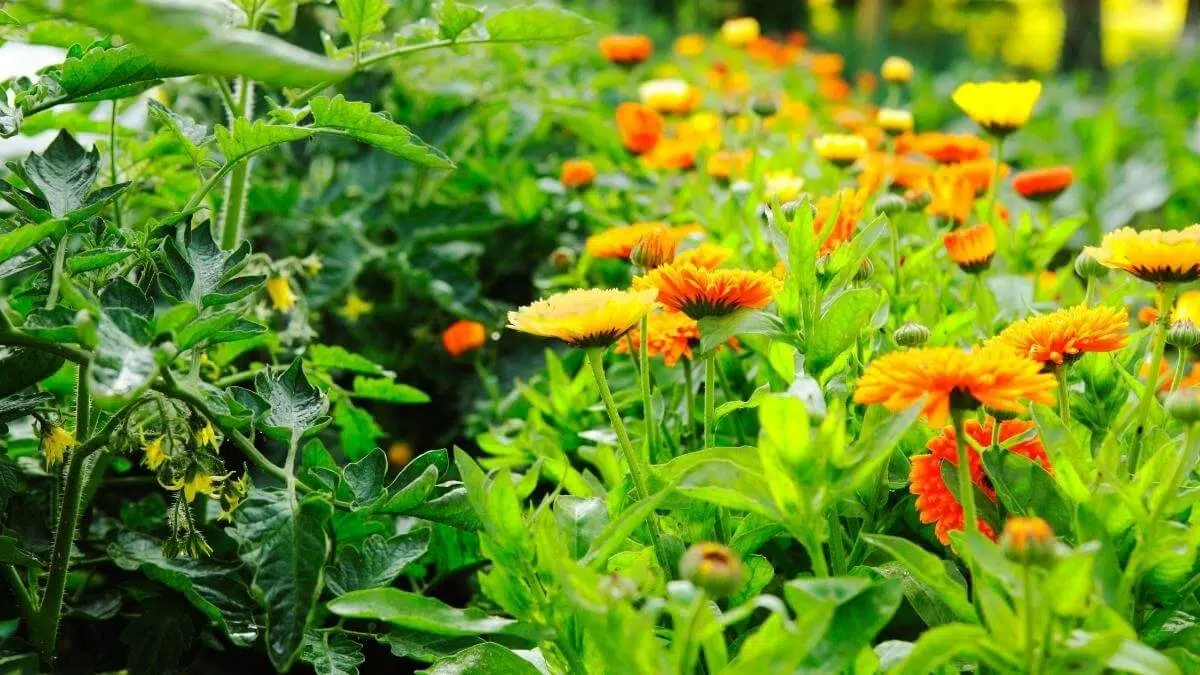
Where to Plant Your Tomatoes
While the plants are growing indoors, you want to make sure you have the right environment for them to grow all set up. No matter where you’re growing your plants, they are going to need some basic needs.
Sunlight Requirements
Tomatoes need at least 6-8 hours of full sun each day. Of course, there will be cloudy days, but on average they are full sun plants.
You want to make sure your plants are going to be in a location that doesn’t get too much shade each day. You can track the sun at different times during the day to make sure the spot you have in mind will get enough sunlight.
Watering Requirements
Tomato fruits are made of 90-95% water, so they need a lot of water to be successful and grow big tomatoes.
How often to water tomato plants depends on the weather of the past few days, the temperature that day, and if you’ve watered them recently. You can check the soil with your finger to see if the soil is moist or if it needs to be watered.
A general rule of thumb is to water them at least once every two days, more if it’s really hot, and less if it’s rained recently.
Watering Tomatoes Deeply
When watering tomato plants, you want to make sure you’re not just watering the surface of the soil. Roots move around to find water, so if the moisture just stays on the surface, the roots will move there and the plant won’t be as strong.
Watering tomatoes deeply is when you water them slowly, letting the water sink in and then continuing on. You are trying to make sure the water is penetrating each layer of soil, so the roots can find water more easily.
Planting Tomato Seedlings in the Ground
If tomatoes are the only plants you’re growing, then you can skip this next advice. But if you are growing multiple types of plants and herbs, you should know about something called companion planting.
Companion Planting
Companion planting is when you are purposefully planting certain vegetables and herbs near each other because they help protect the other from pests, provide nutrients to each other, or even help the other taste better!
Some of the best tomato companion plants are:
- Garlic
- Marigolds
- Basil
- Onions
- Peppers
Some of the worst tomato companion plants that you shouldn’t plant near tomatoes are:
- Broccoli
- Corn
- Dill
- Kale
- Potatoes
Where You’re Planting Them
Tomatoes do well growing in all kinds of environments. Some of the more common ones are:
- Raised Beds
- Pots and Containers with good drainage holes
- Grow Bags
- In the ground
You can even grow tomatoes hydroponically or in an Aerogarden!
Tomato Plant Spacing
A general rule of thumb is to plant tomatoes around 2-3 feet apart as they get bushy and need good airflow.
If you’re following square foot gardening principles, they say you can plant one tomato plant per every 1 square foot. I tested this out this season and it’s working quite well. However, I do have to really stay on top of pruning the plants so they have enough room.
Planting Tomatoes Deep
If you’ve ever seen a tomato plant, you know it has a ton of “hairs” along the length of every branch. These are actually the start of roots.
If you let tomatoes grow, they would be more of a vine growing along the ground, and those hairs would dig into the ground and take root.
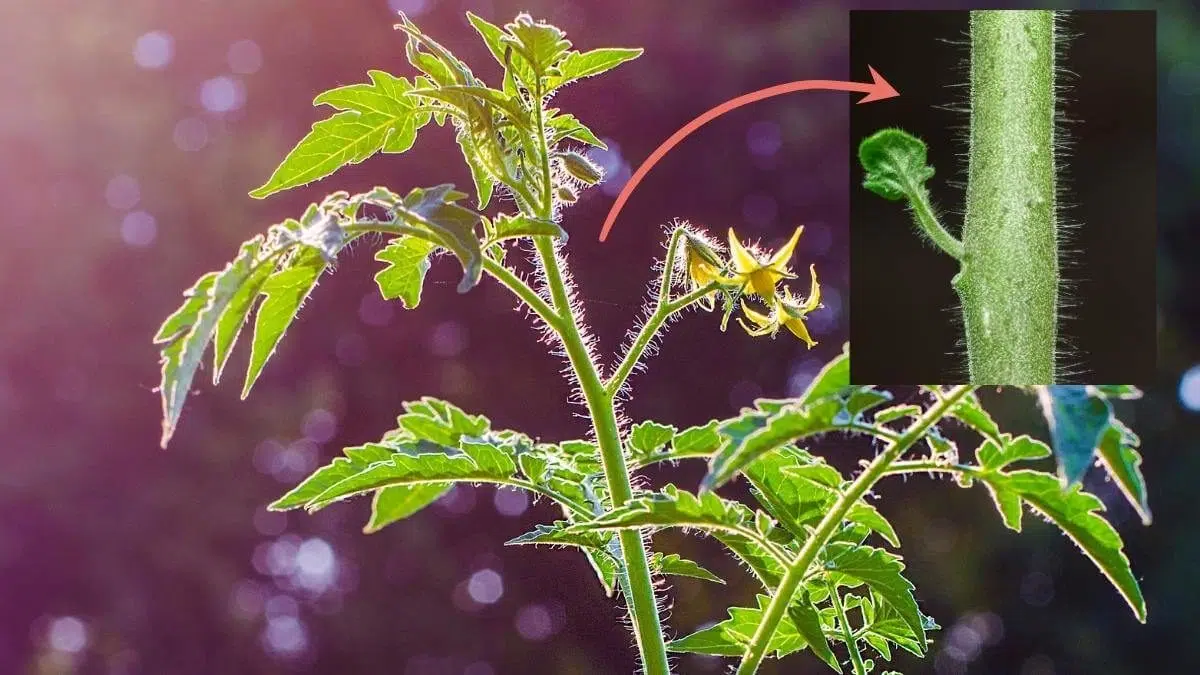
All of that to say, when you go to plant your tomatoes, you want to plant them very deep. I actually pull off all the branches except for the top 2-3, and plant the rest of the main stem in the ground. Because of the buried stem, the planting hole they go in are usually at least 12 inches deep.
It might sound crazy, but this actually helps get their roots deeper into the soil and cause the plant to have more sturdy stems.
Staking and Trellises for Tomatoes
Because tomatoes get extremely heavy and naturally want to grow along the ground, it’s important to have a plan for staking your tomato plants to keep them upright.
There are tons of trellis ideas you can look at for ideas on how to build something out of materials you might already have. My favorite trellis method is called the Florida Weave Trellis.
I love it because you just need a few posts and some gardening twine, and you’re good to go!
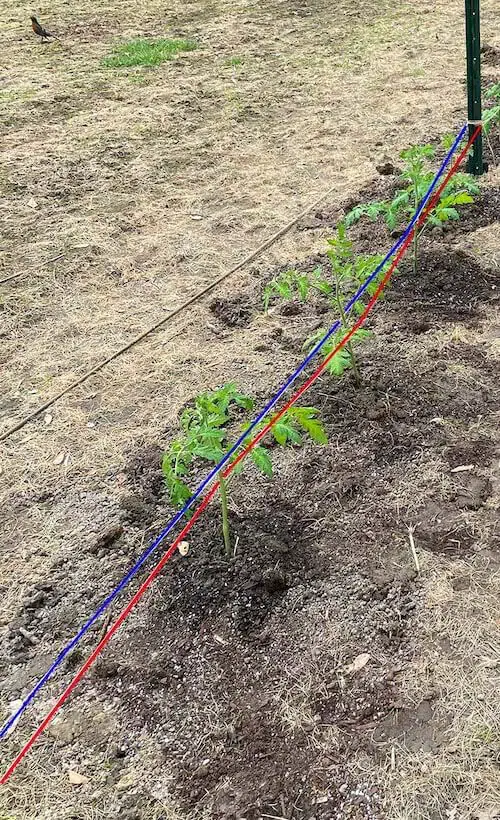
Pests to Watch Out For
Tomatoes can be affected by all kinds of animals and pests.
Animals that eat tomatoes include deer, squirrels, birds, raccoons, groundhogs, and mice.
My go-to method for keeping pests of the animal type away from my plants is a fence around your own garden, along with a motion-activated sprinkler for squirrels.
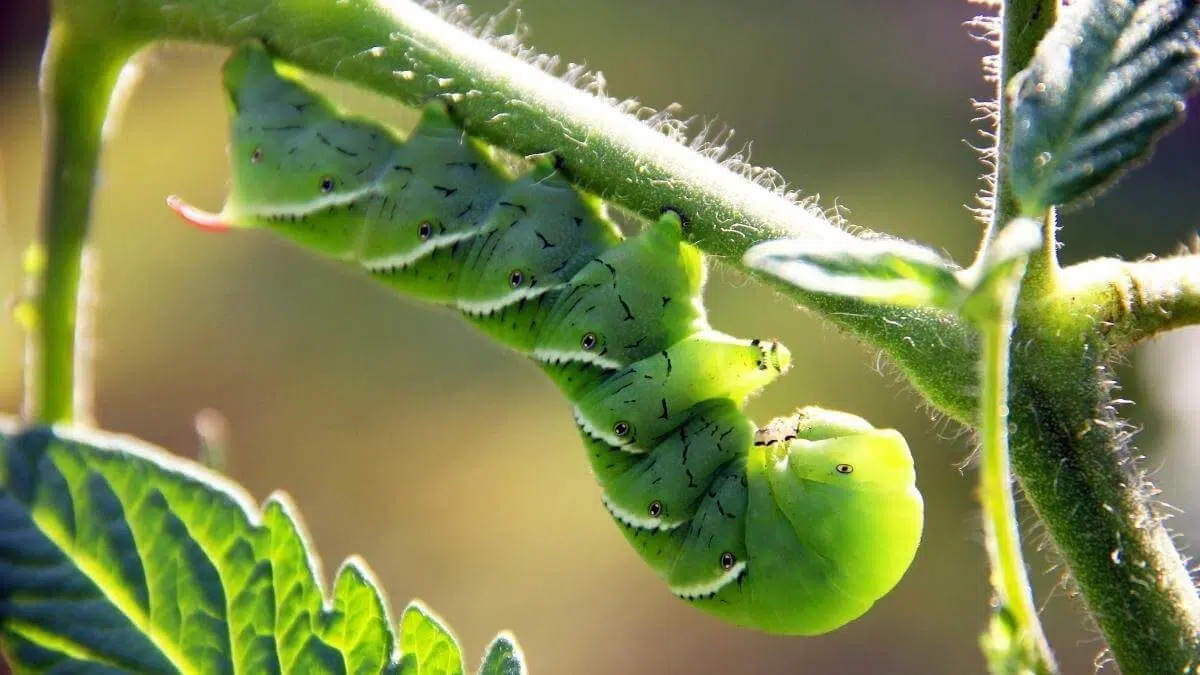
Insects and worms can be big problems for growing tomatoes. Here are some guides for getting rid of the more common ones:
Problems & Diseases to Watch Out For
Tomatoes not only have pests that can wreak havoc on your plants, but they are also susceptible to different plant and fungal diseases.
Here are some of the most common:
- Early Blight
- Late Blight
- Fusarium Wilt
- Powdery Mildew
- Septoria Leaf Spot
- Blossom End Rot
- Mosaic Viruses
If you’ve never grown tomatoes before, don’t let this list stop you! While these can be bad for your plants, most of the time you can just remove a few leaves and keep on growing!
Pruning and Harvesting Your Tomato Plants
Taking care of your tomato plants is just as important as choosing the right location and garden soil to grow them in.
Pruning Tomatoes
Pruning your tomatoes can promote good airflow, reduce the possibility of those nasty diseases I mentioned above, and increase your tomato yields.
If you’re growing determinate varieties, it’s best to not prune them much. They only produce one bounty of tomatoes each season, so by pruning them you could be removing some of the future tomato flowers and reducing the yields.
But if you’re growing indeterminate tomatoes or semi-determinate plants, you should learn about tomato suckers.
Tomato suckers are essentially new branches forming between the main stem and a branch.
Pruning these suckers is a good idea, as otherwise the plants will get too bushy and their energy will go towards creating new leaves instead of growing flowers that turn into tomatoes.
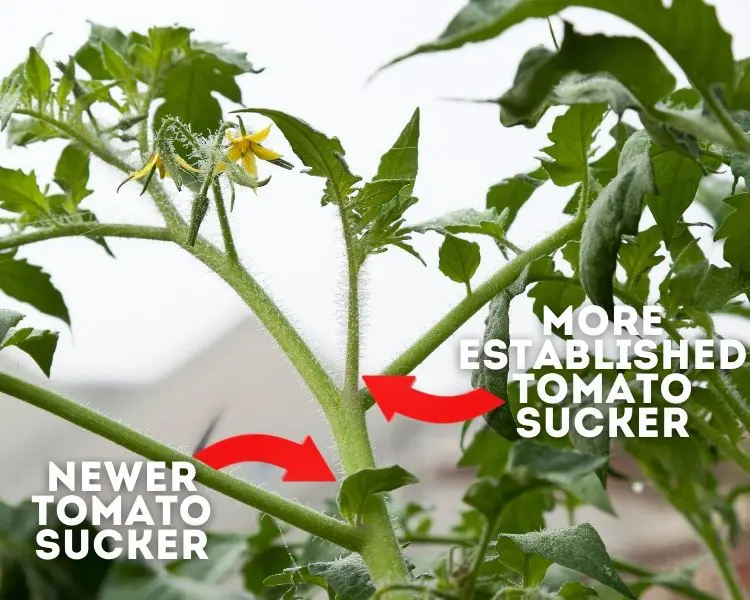
When to Pick Tomatoes
You have fruits growing on the plant, which is EXCITING, but how do you know when to pick them?
I like to pick tomatoes when they are in the breaker stage. The breaker stage is when they are starting to turn from green to red (or yellow if you’re growing yellow tomatoes) on the bottom.
While you can leave them on the plant until they are fully red, this is a dangerous move. There are a lot of animals and pests that LOVE eating ripe tomatoes, and they will move in on your tomatoes if you leave them outside too long.
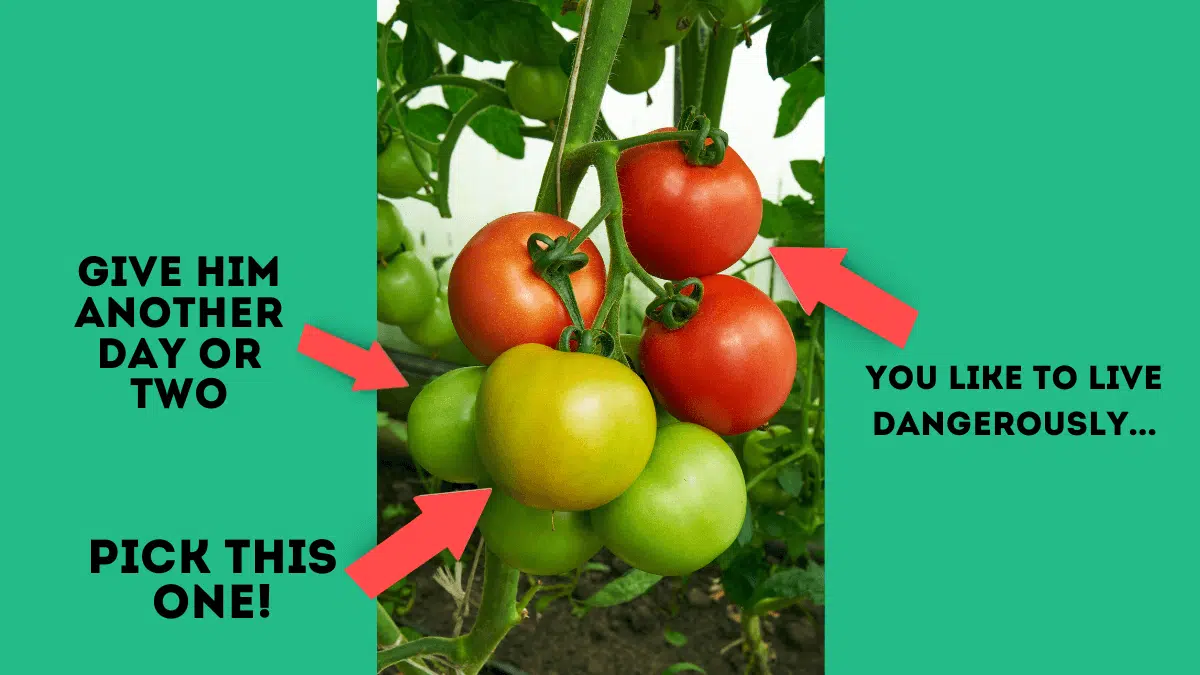
This image should give you a better idea of when to pick tomatoes so you make sure that no one else gets to them first!


